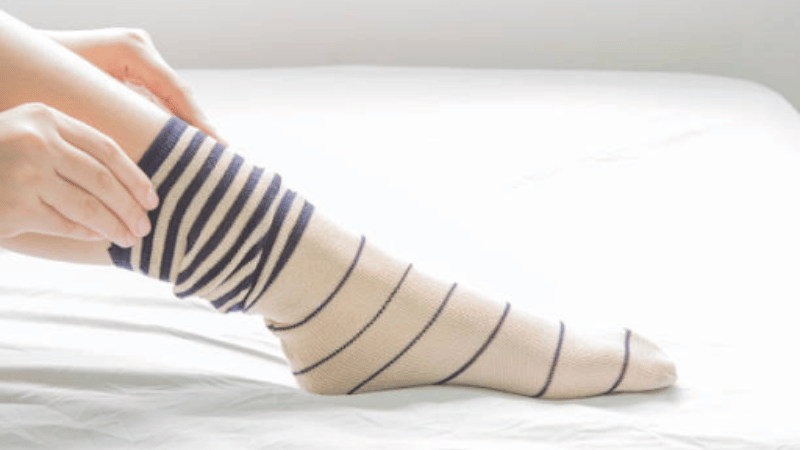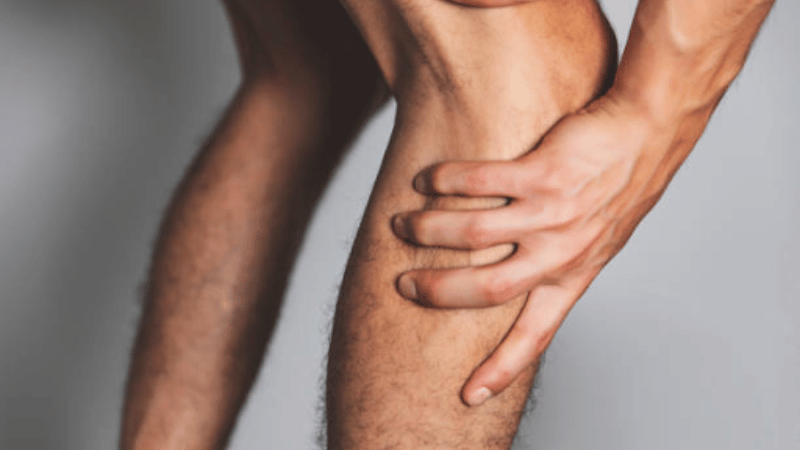Do you ever get the feeling that one of your legs is colder than the other? Are you struggling to walk due to numbness or a tingling sensation in a single leg? If you feel coldness, numbness, tingling, or aching in one leg that doesn’t go away with activity, it could be a sign of peripheral artery disease (PAD), a potentially serious condition.
Our bodies rely on a complex network of blood vessels to deliver fresh, nutrient-rich blood to the tissues. PAD occurs when plaque buildup within the arteries blocks blood flow to the legs, thighs, calves, buttocks, ankles, and feet. Without treatment, potential loss of tissues in the legs and feet may occur.
In this article, we’ll explore the different causes of numbness in one leg and why you should schedule a consultation with a vascular doctor as soon as possible.
What Causes Numbness in One Leg?
When people sit in a certain position for a long period of time, they may experience numbness or coldness in a single leg. This cold or numb sensation typically disappears relatively quickly when they get up to move or switch positions.
However, if the feeling or sensation is ongoing, it could indicate restricted blood flow to the extremities. There are three different causes of chronic numbness or coldness in one leg. This includes:
- Diabetic Neuropathy: Diabetic neuropathy can lead to numbness in the legs, feet, or hands. The numbness is typically paired with digestive issues, sharp pain, or a burning sensation.
- Peripheral artery disease (PAD): PAD restricts blood flow to the legs, ankles, and feet. When your lower extremities aren’t getting enough nutrients, it can lead to numbness and coldness in one leg.
- Deep Vein Thrombosis (DVT): This serious condition typically causes pain in one leg, typically the calf or the thigh. You may also experience throbbing, swelling, coldness, or numbness.
PAD and poor circulation are the most common causes of coldness or numbness in one leg. Chronic coldness in one leg (left or right) may result from a partially or fully blocked artery. If you’re experiencing any coldness or numbness, consult a vascular specialist.
What is PAD?
Peripheral artery disease (PAD) is caused by plaque buildup in the arteries. This buildup can restrict essential blood, oxygen, and nutrients from your lower extremities. Chronic coolness, numbness, or tingling in one or both legs is a common sign of a moderate to severe blockage.
PAD is a progressive disease that cannot be reversed. However, with minimally invasive treatment and lifestyle changes, you can minimize the severity of the symptoms and reduce your risks of serious complications later.
Other Symptoms of PAD
PAD symptoms can vary depending on the affected arteries and the severity of the blockage. One of the more common symptoms is called claudication, a painful cramping in the legs caused by decreased blood flow to the muscles. Claudication pain usually eases when resting, but if the aching continues, it can be a sign that PAD has progressed and requires treatment.
Other symptoms of PAD you may experience in addition to coldness or numbness in one leg include:
- Achy, tired legs
- Heaviness in one or both of your legs or feet
- Cramping in your buttocks, thigh, calf, or feet
- Discoloration
- Leg(s) turning a pale blue or gray color
- Shiny skin
- Difficulty walking or climbing stairs
- Wounds that don’t heal
- Numbness in one leg while walking
- Hair loss or slow growth
Is Coldness in a Single Leg Serious?
If you’ve noticed one of your legs is colder than the other and you’re experiencing other PAD symptoms, see a vascular specialist immediately.
Temperature changes in your leg may indicate a moderate to severe level of peripheral artery disease. Moderate to severe PAD is characterized by partially to almost fully blocked arteries. A blockage means that the tissues and muscles in your legs aren’t getting enough oxygenated blood.
Yan Katsnelson, M.D., Founder and CEO of USA Vascular Centers, warns that the tissues in your legs and feet may begin to shut down without sufficient blood flow. If you do not get PAD treated, you can be at significant risk of heart attack, stroke, and gangrene — resulting in amputation or death.
Diagnosing the Causes of Leg Numbness, Tingling, or Coldness
If you have any symptoms of PAD, consult with a vascular specialist immediately for an evaluation and a diagnosis. At USA Vascular Centers, we use three different types of tests to diagnose PAD:
- Ankle-Brachial Index: Used to measure and compare blood pressure near your ankles and feet.
- Angiogram: Uses iodine dye to provide images of your arteries and detect the location of a blockage.
- Blood Tests: To detect high cholesterol or other contributing factors of PAD.
If you are diagnosed with PAD, a vascular specialist will put together a custom treatment plan for you. They’ll also sit down to discuss the different treatment options you have available depending on the severity of your condition.
Why It’s Important to Seek Treatment
PAD is a progressive disease, meaning the blockages in your arteries will likely get worse over time. Delaying treatment may exacerbate your symptoms and lead to serious complications. Waiting until PAD becomes severe may also limit your treatment options.
Speaking with a professional who can recommend early intervention and lifestyle changes is crucial in slowing disease progression and preventing possible complications. The skilled professionals at USA Vascular Centers are ready to answer any questions about PAD to ensure your continued health and peace of mind.
Treatment for Cold or Numb Legs
USA Vascular Centers provides minimally invasive, non-surgical PAD treatments that can help restore blood flow and eliminate symptoms like coldness, numbness, and tingling in the legs.
- Angioplasty: A small balloon is inserted into the affected artery via a catheter. The balloon then expands, pushing the plaque against the artery walls and restoring blood flow.
- Stenting: Following angioplasty, a stent, a hollow tube that stays in place and keeps the artery open, can be placed at the site of the blockage.
- Atherectomy: This treatment removes accumulated plaque with a laser or tiny blade, allowing blood to flow through the artery freely. Determining the best treatment for you may depend on the severity of your PAD and how well your symptoms are controlled. Your vascular specialist may be able to recommend medications and lifestyle changes that can slow the progression of PAD.
Schedule a consultation with USA Vascular Centers today and take control of your PAD.
FAQs About Cold Legs & Leg Numbness
What causes numbness in one leg?
Poor circulation and restricted blood flow are the most common causes of numbness in one leg. If these symptoms are chronic or ongoing, it could be a sign of peripheral artery disease (PAD), a serious vascular condition.
Why are my legs cold from the knee down?
Coldness in the knee down may be a sign of high blood pressure, cholesterol, diabetes, or PAD. For a complete evaluation, schedule a consultation with a vascular specialist.
What is a cold and numb leg a symptom of?
Cold and numb legs are a symptom of various vascular conditions, including peripheral artery disease (PAD), deep vein thrombosis (DVT), and diabetic neuropathy. If you suspect you have any of these conditions, consult with your vascular specialist immediately.
Dr. Yan Katsnelson is a philanthropist, business owner, and highly skilled cardiac surgeon. He is the Founder and CEO of USA Vascular Centers, which is part of USA Clinics Group, the parent company of USA Fibroid Centers, USA Vein Clinics, and USA Oncology Centers, with more than 90 facilities nationwide. Dr. Yan has established himself as a strong advocate for the accessibility and affordability of the most advanced medical care close to home, and his mission is to create a positive experience for each patient with compassionate, personalized, and expert care.



